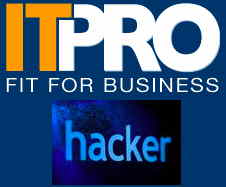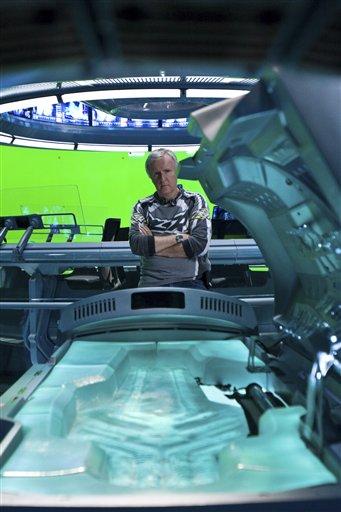The festival kicks off with an Aug. 6 opening night celebration at Hollywood’s Directors Guild of America Theatre with a special award showcase of three shorts shot by acclaimed cinematographer Darren Lee and directed by Demi Moore, Kirsten Dunst and Carter Smith.
Opening night also will mark the special presentation of the HollyShorts and Haydenfilms Indie Film Visionary Award to Eli Roth.
Other high-profile shorts screening during opening night event include “Kidnapping Caitlynn,” a short film starring Jason Biggs (“American Pie”), Julie Benz (“Dexter”) and David Prior’s thriller “AM1200.” Royalty Rope Events, Inc presents the evening.
The Haydenfilms online ceremony on Aug. 7 will feature for the first U.S. screening of Roth’s special director’s cut of “Cabin Fever.”
HollyShorts co-founders Theo Dumont and Daniel Sol said they are both very excited about this year’s event and the expanded role being played by Haydenfilms. “Initially we had no idea the festival would get so much attention,” explained Sol. “However, now it annually brings attention and awareness to some really incredible talent.”
“The goal of Hollyshorts is to create a community,” added Sol. “We’re bringing together a variety of people involved in the film industry in a way where they can benefit each other.”
Said, Dumont, “One of the most endearing qualities of the festival is its strong attempt to draw in not only professional and more experienced filmmakers, but students as well. It is amazing what artists participating in HollyShorts can create on such small budgets and for no other reason than love of the craft.”
Haydenfilms President Hayden Craddolph said, “Being able to move our annual awards ceremony to HollyShorts and Hollywood is a bold step for us and will give us even more exposure to our finalists, our online festival and our mission to support young and independent filmmakers.”
At the Haydenfilms Awards Ceremony, one of four final films chosen by the public will win the coveted $10,000 grand prize award. The finalists include “Babbage,” “The Brass Teapot,” “Displaced,” and “My Turtle’s Name Is Dudley” representing the United Kingdom and America. Sixteen countries are represented among the 53 semi-finalists and several hundred entries total.
“It is amazing that our festival is attracting independent and student filmmakers from around the world. The quality of our entries continues to grow and cover an even more diverse array of subjects, many that are very topical. Based on the opinion of thousands of voters, our Final Four truly represent filmmaking at its finest and we expect a very close competition to determine our final,” said Craddolph
Here are details about each of the final films:
• “Babbage,” directed by Claire Barker and produced by Trevor Hughes, is a 2008 film from the United Kingdom and a pilot for a feature project. The 15-minute film was inspired by the Victorian inventor Charles Babbage, a man equally famous for inventing the computer and failing to build it. Part historical drama, part fantasy, the film introduces us to those Babbage loved and lost. Babbage’s story is one of inventive genius and failure. ( http://www.frameonframe.co.uk )
• “The Brass Teapot” is directed and produced by Ramaa Mosley. This 23-minute American entry is a tale of Alice and John who buy a teapot and get much more than they bargained for.
• “Displaced” is another U.S. film directed by Klaus Pas and produced by Klaus Pas and Guy Pas. In it, Arnaud runs a famous jazz club in Paris where the displaced gravitate, victims of the global trends that model our society. To the beat of pianist Smokey Sam, they will gather together to witness a cry for hope from Mady, an illegal immigrant from Mali, hiding with his son. It is 30 minutes long.
• “My Turtle’s Name is Dudley” is a narrative short about a young woman named Jade who relives the memory of being molested by her father. It was written, directed, and produced by Johnny Gill. Other producers included: Lajonel Brown, Greg Heller, and Paul Moore. It runs 17 min.
The top prize for this year’s HollyShorts Film Festival grand winner is the revolutionary Red One digital camera and Post/VFX package presented by Clifton Production Services. ( http://www.cliftonpost.com )
The winner will be awarded a RED ONE camera package, a digital cinema camera unrivaled in performance and cost, that includes camera body, camera support, follow focus, matte-box as well as PL mount lenses with a value of up to $5,000. The winner will also receive a POST/VFX prize package with a value of $2,500. Overall equipment value of the prize package is more than $100,000
For tickets, a complete schedule and other information, go to http://www.hollyshorts.com or http://www.haydenfilms.com Tickets and special passes also available at http://www.brownpapertickets.com.
Haydenfilms, founded in 2001, is an independent film production and distribution company. Its mission is to create and foster an online network of independent and student film producers, and to provide the support and resources necessary for filmmakers to succeed. In addition to the Haydenfilms Online Film Festival, the Haydenfilms web site provides industry news, a crew database, production boards and shopping for filmmaking software and equipment.
Haydenfilms Film Festival :: NewsFriday, July 17, 2009





